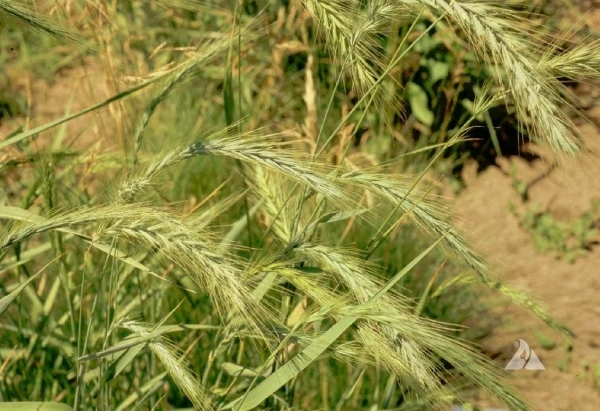
Virginia Wildrye
Botanical Name
:
Elymus virginicus
Plant Type
:
Perennial cool-season bunchgrass
Seasons
:
Active growth in spring and fall, flowers in summer
Sun Level
:
Full sun to partial shade (3–6 hours of sunlight)
Ideal Soil Temperature for Planting
:
50–65°F (10–18°C)
Soil Type
:
Moist, well-drained loamy, clay, or sandy soil; tolerates periodic flooding
Hardiness Zones
:
3–9 (USDA)
Germination
:
10–21 days, benefits from cold stratification. Plant seeds in fall or early spring for best germination
P.H. Level
:
5.5–7.5 (slightly acidic to neutral)
Water/Irrigation
:
Medium water needs, prefers moist soils but is drought-tolerant once established
Fertilization
:
Not needed but organic compost or a light nitrogen boost in early spring can help growth in poor soils
Habit
:
Not needed but organic compost or a light nitrogen boost in early spring can help growth in poor soils
Propagation
:
Seed is the most common method. Division is possible, but not typically practiced
Final Plant Height
:
2–4 feet (60–120 cm)
Spread
:
1–2 feet (30–60 cm). Clumps gradually expand and can self-seed
Flowers
:
Green to purplish seed heads in summer, turning golden brown in fall
Attracts
:
Birds (seeds in fall), pollinators, and grazing wildlife
Uses
:
Erosion control, prairie restoration, woodland edges, cover crop, livestock forage
Companions
:
Switchgrass, Big Bluestem, Asters, Goldenrod, Wild Bergamot
Pruning
:
Cut back in early spring to allow new growth
Toxicity
:
Non-toxic to humans and pets
Pests
:
Few pest issues but may attract grasshoppers or aphids in dry conditions
Diseases
:
Occasionally affected by rust or powdery mildew in humid conditions
Botanical Name
:
Elymus virginicus
Plant Type
:
Perennial cool-season bunchgrass
Seasons
:
Active growth in spring and fall, flowers in summer
Sun Level
:
Full sun to partial shade (3–6 hours of sunlight)
Ideal Soil Temperature for Planting
:
50–65°F (10–18°C)
Soil Type
:
Moist, well-drained loamy, clay, or sandy soil; tolerates periodic flooding
Hardiness Zones
:
3–9 (USDA)
Germination
:
10–21 days, benefits from cold stratification. Plant seeds in fall or early spring for best germination
P.H. Level
:
5.5–7.5 (slightly acidic to neutral)
Water/Irrigation
:
Medium water needs, prefers moist soils but is drought-tolerant once established
Fertilization
:
Not needed but organic compost or a light nitrogen boost in early spring can help growth in poor soils
Habit
:
Not needed but organic compost or a light nitrogen boost in early spring can help growth in poor soils
Propagation
:
Seed is the most common method. Division is possible, but not typically practiced
Final Plant Height
:
2–4 feet (60–120 cm)
Spread
:
1–2 feet (30–60 cm). Clumps gradually expand and can self-seed
Flowers
:
Green to purplish seed heads in summer, turning golden brown in fall
Attracts
:
Birds (seeds in fall), pollinators, and grazing wildlife
Uses
:
Erosion control, prairie restoration, woodland edges, cover crop, livestock forage
Companions
:
Switchgrass, Big Bluestem, Asters, Goldenrod, Wild Bergamot
Pruning
:
Cut back in early spring to allow new growth
Toxicity
:
Non-toxic to humans and pets
Pests
:
Few pest issues but may attract grasshoppers or aphids in dry conditions
Diseases
:
Occasionally affected by rust or powdery mildew in humid conditions
Written by Salome Wapukha – https://www.linkedin.com/in/salome-wapukha-556700193/

